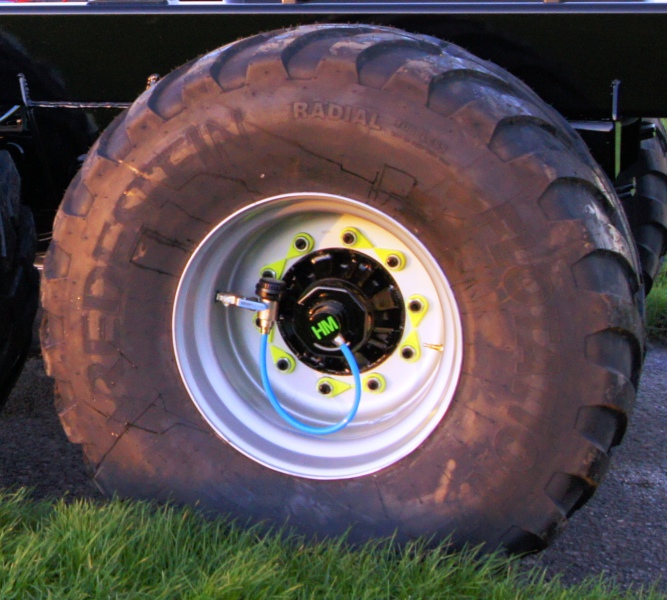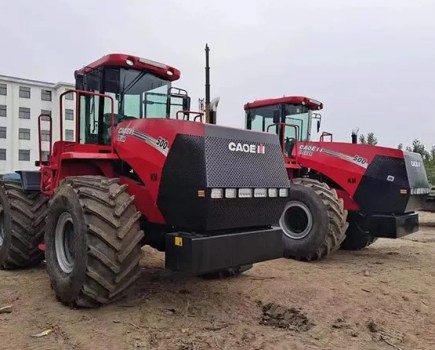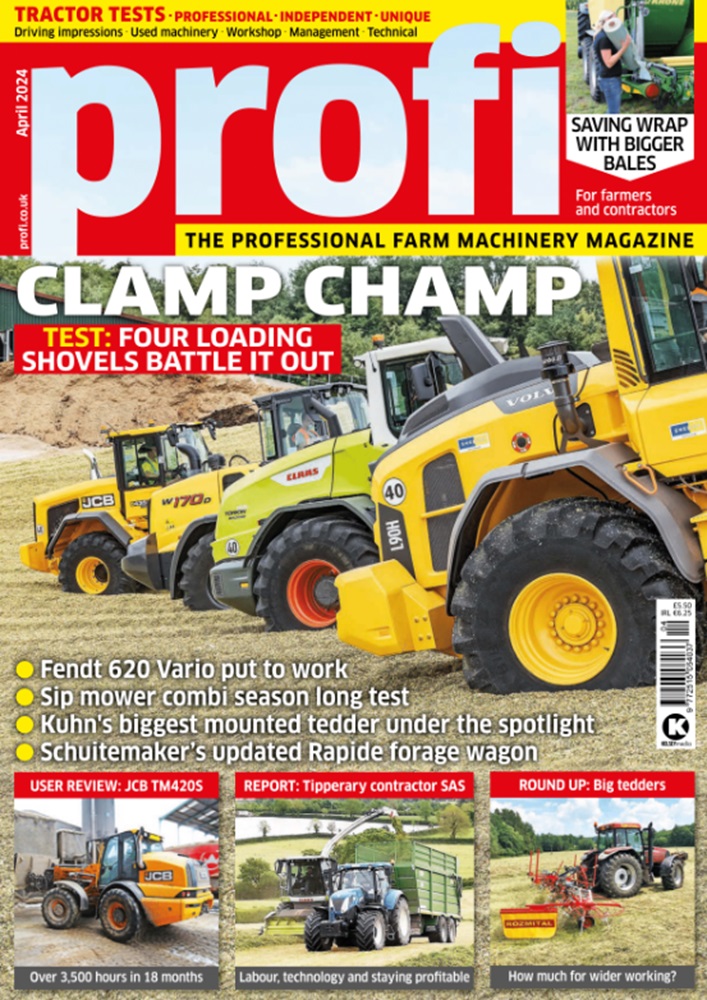Central tyre inflation on grain trailers can be a cost-effective route to achieving soil-friendly 30psi trailer tyre pressures with a mainstream 560/60 R22.5 tyre. The other obvious alternative to central tyre inflation on a grain trailer, says Grant Perry, of Essex-based H M Trailers, is to fit larger, more specialist tyres such as a 710/50 26.5 which, unlike a 560/60 R22.5, can be left to run at 30psi both in the field and at road speeds. “But the disadvantages of these specialist, fatter tyres,” he adds, “are that they’re very expensive to replace, they’re more vulnerable to scrubbing and they require bigger wheel and axle assemblies, which all add to the trailer’s overall weight. “In terms of cost, a single-line inflation system sells for around £3,000 to fit to a twin-axle grain trailer, whereas upgrading the trailer to 710 tyres adds about £2,000. But by the time you cost in the other advantages of central tyre inflation, which may include dropping in-field pressures to even less than 30psi, there isn’t much in it.” With the above in mind, H M Trailers has developed its own central tyre inflation system using PTG components — dump valves, rotary valves, control boxes. Due to be launched at LAMMA this week, the system will be available as on option on new trailers, and importantly it can also be retrofitted to existing H M models. How does it work? In simple terms the H M system employs the towing tractor’s standard compressor to fill four 120-litre air vessels mounted within the trailer chassis. These vessels, in turn, supply air out to the trailer’s four wheels through either twin- or single-line pipework that runs through the trailer axles. The twin-line system delivers two benefits: it does away with the need for a manual ball valve at the wheel rim (this reduces the risk of deflation over time); and it allows the fitting of a digital control box in the tractor cab rather than the operator having to alter settings manually on a control box on the trailer. Here’s a typical grain carting scenario. When the tractor driver arrives at the field, he dumps the pressure from the trailer tyres through a vent within each wheel — to drop the psi from, say, 50 down to a typical field setting of 30. This takes around 10secs. He then collects his load from the harvester and makes his way back to the field entrance/exit, where he then sends the stored air from the vessels to the tyres to bring them back up to 50psi before heading out onto the road. This re-inflation is completed in less than 5secs. Refilling the vessels is the time-consuming part of the process, but Mr Perry reckons this takes the tractor’s compressor less than 10mins. Which means that the journey to the farm, then back to the field, and from the field back to the gate should provide more than enough time for the vessels to be completely topped up again. In other words, it all happens in the background with no impact on carting cycle times. “The storage tanks are the key, because they make it a fully self-contained system,” says Mr Perry. “There’s no need to add expensive additional pumps, as the tractor’s standard compressor is more than capable of supplying sufficient air. The tanks mean you get all the proven benefits of central tyre inflation — reduced rolling resistance, better fuel consumption, less tyre wear — without the hassle of having to wait around for the tyre pressures to build up again when changing from field mode to road mode. With this vessel-based system, re-inflation is pretty much instantaneous.”
Trailer tyre pressures up, down … in a jiffy

Central tyre inflation on grain trailers can be a cost-effective route to achieving soil-friendly 30psi trailer tyre pressures with a mainstream 560/60 R22.5 tyre. The other obvious alternative to central tyre inflation on a grain trailer, says Grant Perry, of Essex-based H M Trailers, is to fit larger, more specialist tyres such as a 710/50 […]









